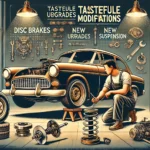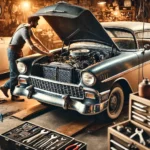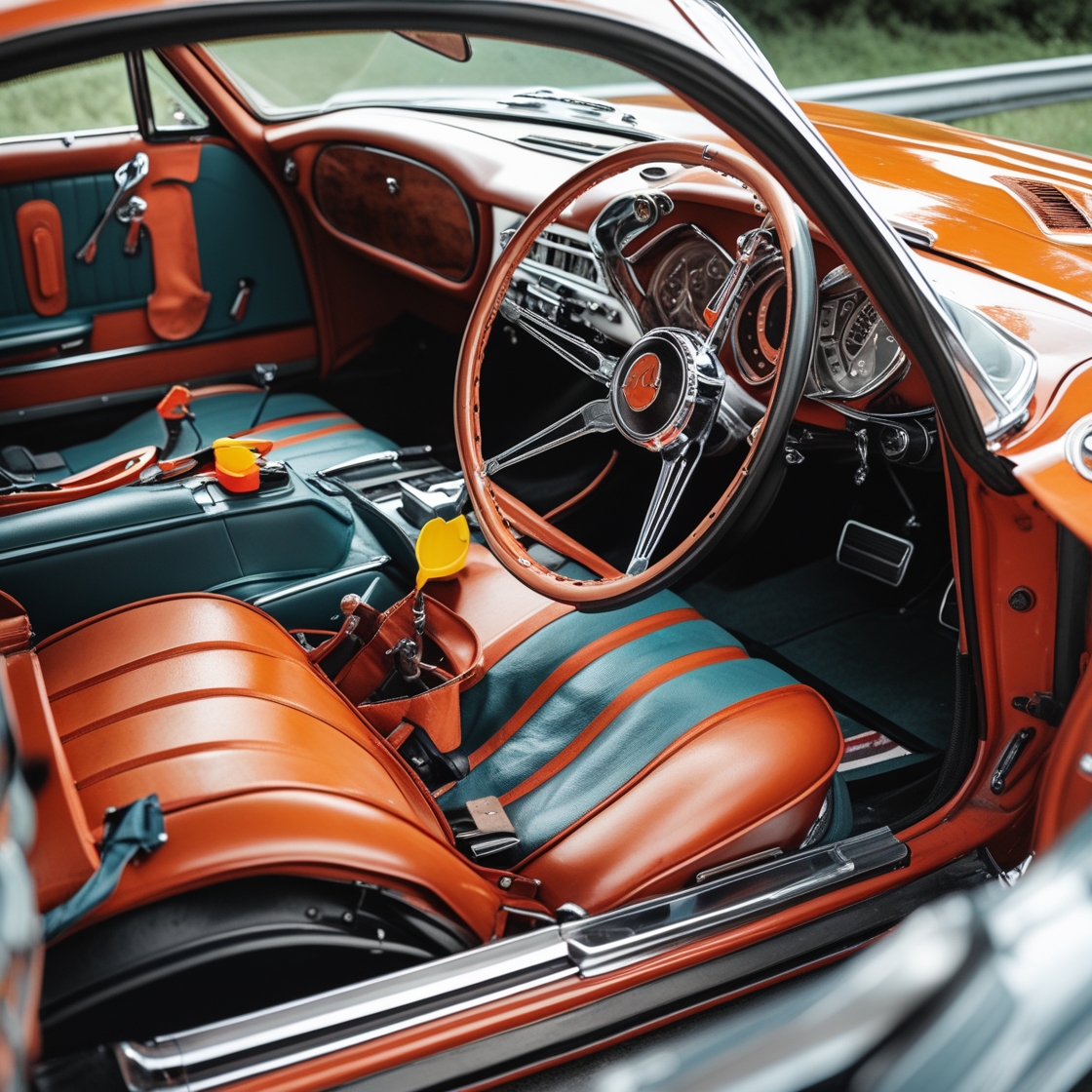Driving a classic car is a one-of-a-kind experience, combining timeless design with the thrill of vintage engineering. However, classic cars often lack the advanced safety features found in modern vehicles, which means extra precautions are essential. To help you enjoy the journey safely while preserving your car’s integrity, here are some key safety tips to keep in mind.
1. Understand Your Car’s Capabilities and Limitations
Classic cars were designed with older technologies that require a different driving approach compared to modern vehicles.
- Braking System: Many classic cars use drum brakes instead of modern disc brakes, which means longer stopping distances. Test and familiarize yourself with your car’s braking response before hitting the road.
- Steering and Suspension: Older steering systems, such as manual or recirculating ball steering, can feel less precise. Be mindful of this, especially when driving on winding roads.
- Engine Performance: Vintage engines may lack the power and efficiency of modern counterparts. Avoid pushing the engine too hard, especially on steep inclines or during overtakes.
Pro Tip: Take your car out on quiet roads before a long trip to practice handling and braking under various conditions.
2. Keep Up with Regular Maintenance
Preventative maintenance is key to keeping your classic car safe and reliable.
- Brake Checks: Inspect the brake system regularly for wear and tear. Replace brake pads, shoes, or drums as needed to ensure optimal stopping power.
- Fluid Levels: Monitor and top off fluids, including engine oil, brake fluid, coolant, and transmission fluid, to avoid mechanical issues.
- Tires: Check for cracks, uneven wear, and proper air pressure. Worn or improperly inflated tires can compromise safety.
- Electrical Systems: Inspect the battery, wiring, and lights to ensure everything is functioning as expected.
Pro Tip: Work with a mechanic who specializes in classic cars, as they’ll be familiar with the nuances of vintage vehicle maintenance.
3. Consider Safety Upgrades
While preserving originality is important for many classic car owners, certain safety upgrades can enhance your driving experience without compromising the car’s character.
- Seat Belts: Install modern seat belts if your car doesn’t already have them. They’re a must for protecting you in the event of an accident.
- Improved Lighting: Upgrade your headlights to brighter halogen or LED options for better visibility at night.
- Modern Tires: Use high-quality modern tires that provide superior grip and safety, while still maintaining the vintage look with retro-style sidewalls.
- Brake System Upgrade: If you plan to drive frequently, consider upgrading to disc brakes for more reliable stopping power.
Pro Tip: Ensure any modifications are reversible if you wish to maintain the car’s original value.
4. Practice Defensive Driving
Classic cars require a more cautious driving style due to their design and age.
- Leave Extra Space: Keep a greater distance between your car and others to allow for longer stopping times.
- Avoid Sudden Maneuvers: Classic cars may not respond well to abrupt steering or braking, so maintain smooth and controlled movements.
- Watch the Weather: Avoid driving in heavy rain, snow, or extreme heat, as classic cars can be more prone to mechanical issues under these conditions.
Pro Tip: Use highways or scenic routes with less traffic to enjoy the ride without unnecessary stress.
5. Know the Local Laws and Requirements
Laws regarding classic cars can vary depending on your location.
- Registration and Inspection: Some regions have special requirements for registering and inspecting vintage vehicles. Make sure you meet all legal obligations.
- Restricted Zones: Be aware of emissions laws or city restrictions that may limit where you can drive a classic car.
Pro Tip: Keep your registration, insurance, and any required permits up to date and easily accessible.
6. Be Prepared for Emergencies
Even with careful planning, breakdowns or emergencies can happen, especially with older vehicles.
- Emergency Kit: Carry a toolkit, jumper cables, a flashlight, extra fluids, and a first-aid kit.
- Spare Parts: Consider bringing key spare parts, such as belts, fuses, and spark plugs, that are prone to wear.
- Roadside Assistance: Sign up for a roadside assistance program that caters to classic cars, as they often require special care.
Pro Tip: Inform someone about your planned route and estimated arrival time, especially for longer drives.
7. Enjoy the Journey
Finally, remember that driving a classic car is about savoring the experience. Take your time, appreciate the craftsmanship of your vehicle, and focus on the road ahead.
- Capture Memories: Bring a camera or journal to document your journey.
- Share the Experience: Invite friends or family to join you for a scenic drive—it’s a great way to share your passion for vintage cars.
Pro Tip: Join a local classic car club or community to connect with other enthusiasts and learn more about safe driving techniques.
Conclusion
Driving a classic car is a unique blend of adventure and nostalgia, but it requires extra attention to safety and maintenance. By understanding your car’s limitations, performing regular upkeep, and following these safety tips, you can enjoy the open road with confidence and peace of mind.








